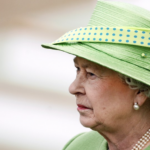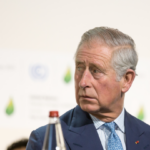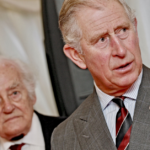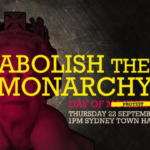Attempted Assassination of Queen Elizabeth II: Revenge Was the Motive
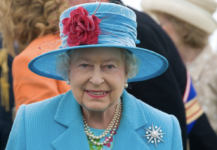
The Jallianwala Bagh massacre occurred when British soldiers shot and killed approximately 400 unarmed protesters, men, women and children, injuring 1,200 in Amritsar, India in 1919.
Many historians say the casualties were much higher than reported, dependent on whether the British or Indian figures are accepted.
The Jallianwala Bagh garden saw 10,000 citizens gather to celebrate the Sikh spring festival, Baisakhi, with many also attending in order to protest in relation to political autonomy for India.
It was a time when the British authorities reneged on eradicating war time policies, which were repressive, enacting such oppressive legislation such as the Rowlatt Act (otherwise called the anarchial and revolutionary crimes act of 1919 aka the black act.
It was against this act, apparently, that the protest was about and with due cause, as it permitted the continued preventive indefinite detention and imprisonment without trial, amongst other repressive measures.
Mahatma Gandhi, amongst other Indian leaders of the time had organised non-violent marches, called satyagraha.
3 years later, this heinous act was repealed by the special laws repeal act 1922, after the findings of the repressive laws committee inquiry.
Treason Acts of 1351 and 1842
This 1351 Act saw the hanging of Lord Haw Haw, also known as William Joyce for the crime of broadcasting Nazi propaganda during war time.
So, for the person convicted recently of endeavouring to kill the Queen in 2021, it is fortunate that he falls to be dealt with under section 2 of the UK’s Treason Act of 1842.
Marcus Sarjeant in 1981 was the previous convicted person under this section of the Act, being sentenced to 5 years imprisonment for firing blank shots at the Queen during a London parade, known as trooping the colour.
Trooping the colour has for in excess of 260 years commemorated the official birthday of the British sovereign, with a ceremony involving all regiments of the British armed forces. This year it will be 17 June, the king’s birthday.
A British national was the would-be assassin
Windsor Castle on Xmas day 2021 saw British citizen, Jaswant Singh Chail, a self-described Indian Sikh from Hampshire, England, arrested after scaling the walls of the castle with a rope ladder and armed with a cross bow, which was loaded and ready to fire.
According to Nick Price, head of the cps special crime and counter terrorism division, ballistic testing showed that the crossbow was comparable to a powerful air rifle, capable of causing serious or fatal injury.
Queen Elizabeth II and other members of the royal family were in residence at Windsor castle at the time.
Plea of guilty
The UK crown prosecution service said that on 3rd February 2023, Chail pleaded guilty to making threats to kill, contrary to section 16 of offences against the person act 1861, possession of an offensive weapon, contrary to section 1 of prevention of the crime act 1953 and an offence under section 2 of the 1842 treason act, with the court ordering medical reports prepared before sentence on 31 March 2023.
He will be sentenced at London’s central criminal court, the Old Bailey, brought from a secure psychiatric facility where he is presently detained.
When arrested, Chail had a note on him, suggesting that he either expected to be killed or commit suicide, as he politely told the arresting officer to desist from removing his clothing and that he didn’t want to be embalmed.
Social media advertisement for assassination
The would-be murderer had broadcast on social media his intentions and the perceived reasoning behind an attempt to kill the Queen, saying it was for those who died at the Jallianwala Bagh massacre, including those who have been killed, humiliated and discriminated against because of their race.
The potential killer had earlier attempted to join the ministry of defence police, so that he could get closer to the Queen.
Jallianwala Bagh public garden
Situated close to the Golden temple of Amritsar, Punjab, India, the garden now has a memorial to those who perished at the hands of British soldiers under the command of Colonel Reginald Edward Harry Dyer, acting as brigadier general, who was the man who ordered the troops to fire on the unarmed 10,000 protesters at the Jallianwala Bagh garden on that fateful day.
Whilst it is clear that the commanding officer on the ground that day was brigadier general Dyer, historians are divided as to whom is responsible for the actual massacre taking place.
Indu Banga, a specialist in the history of Punjab is one of those who lay the blame at the feet of lieutenant governor Michael O’Dwyer of Punjab, who was assassinated 21 years after the massacre, at Caxton Hall London, by an Indian revolutionary, Udham Singh Kamboj (aka Sardar Udham Singh), an orphan born in the Sangrur district of Punjab, India.
The revolutionary was in the Jallianwala Bagh garden the day of the massacre and swore revenge for what occurred. He is now known as the patient assassin, taking his revenge on behalf of his country 21 years later.
The reason for the former lieutenant governor’s execution was, as is reported, he was the person responsible who ordered the massacre, or as some historians maintain, at least culpable for the support he gave to general Dyer post the massacre.
It is somewhat ironic that brigadier general Dyer was born in Punjab. It is interesting that the former lieutenant-governor of Punjab in British India at the time, Sir Michael O’Dwyer as he became known, was in London to attend a conference of the East India Association and the central Asian society.
The assassin of Sir Michael O’Dwyer was a revolutionary who had spent time in a British prison for weapons offences, who had entered Britain illegally to perpetrate the act and suffered the consequences of being hanged at Pentonville prison, London for the crime.
The murder kit, a gun, knife and diary can be seen at the black museum of Scotland yard, known as the crime museum.
As is in keeping with his philosophy, Mohandas Karamchand Gandhi, aka Mahatma Gandhi condemned the crime and as a peaceful revolutionary and political ethicist, went on to lead India to independence. Mr Gandhi was also a lawyer.
War crime which went unpunished
Despite former British prime minister, Winston Churchill, then British secretary of state for war, recommending that brigadier general Dyer be disciplined for his actions, the army council permitted the alleged murdering brigadier general the privilege of the fog of war excuse to allow him to resign normally.
8 years later, he was given a full military funeral in London.
NSW assassination attempt on the Queen
On an Australian royal tour, to coincide with the bicentenary of captain Cook’s 1770 landing at Botany Bay, her majesty and prince Philip were travelling through the blue mountains having left Sydney by rail, when the train hit a massive log, unbeknown to the royals, who apparently slept through the incident.
Sydney detective, superintendent Cliff McHardy of NSW police, several decades later, told the story that if the train had been travelling at full speed, due to the driver not noticing the log, it would have derailed the train at a spot where it would have careered down a steep embankment.
Despite Buckingham palace denying a record of the incident, royal watchers observed the train driver had been honoured with a special medal, surely not for simply driving a train on that day.
An anecdote told by the former Lithgow Mercury newspaper police reporter, Len Ashworth says that the only suspect NSW police had was an Australian Irish Republican Army (IRA) sympathiser, who was never charged.
New Zealand in 1981, saw the queen face another assassination attempt, by Christopher John Lewis, a New Zealander from Dunedin who aimed a shot at her majesty, as she disembarked from a rolls royce.
It was alleged by New Zealand police that it was his intention to also assassinate prince Charles too, now the king.
Narrowly avoiding a charge of treason, Lewis ended up receiving a 3-year prison term, including detention in a psychiatric hospital for 12 months, but committed suicide whilst incarcerated.
Sydney, NSW in 1994 saw her majesty’s’ son, now King Charles III, the target of an asylum seeker protester, David Kang, who jumped on to a stage where Australia day festivities were being enjoyed and fired two blank shots from a sporting starter pistol.
He received 500 hours of community service.
In what was deemed to have not been an assassination attempt, Mr Kang went on to become a Sydney barrister, specialising in criminal , commercial and corporations law, including equity and medical negligence.
Twenty years later, 2014, then 2015 & 2016, British authorities uncovered other plots to kill members of the royal family involving terrorist groups, which were dealt with adequately, some by deadly force; including the one which is the subject of this article, that of an Indian Sikh, who was welcomed to Britain and became a clear and present danger in 2021.
The offence of treason in Australia
The attempted assassination of the Queen has the potential to amount to the offence of treason, which is a crime under section section 80.1 of the Criminal Code Act 1995 (Cth) that carries a maximum penalty of life in prison.
To establish the offence, the prosecution must prove beyond reasonable doubt that you:
- Killed the sovereign, sovereign’s heir, governor-general or prime minister,
- Harmed the sovereign, governor-general or prime minister leading to their death,
- Harmed, imprisoned or restrained the sovereign, governor-general or prime minister,
- Levied war, or undertook an act preparing for war, against the Commonwealth, or
- Instigated a non-citizen to invade the Commonwealth, or one of its territories.
Defences to the charge include self-defence, duress, and necessity. In the event you are able to raise evidence of any such defence, the onus then shifts to the prosecution to prove beyond a reasonable doubt that the defence does not apply in the circumstances.
You are entitled to an acquittal – in other words, a finding of not guilty, if the prosecution is unable to do so.

